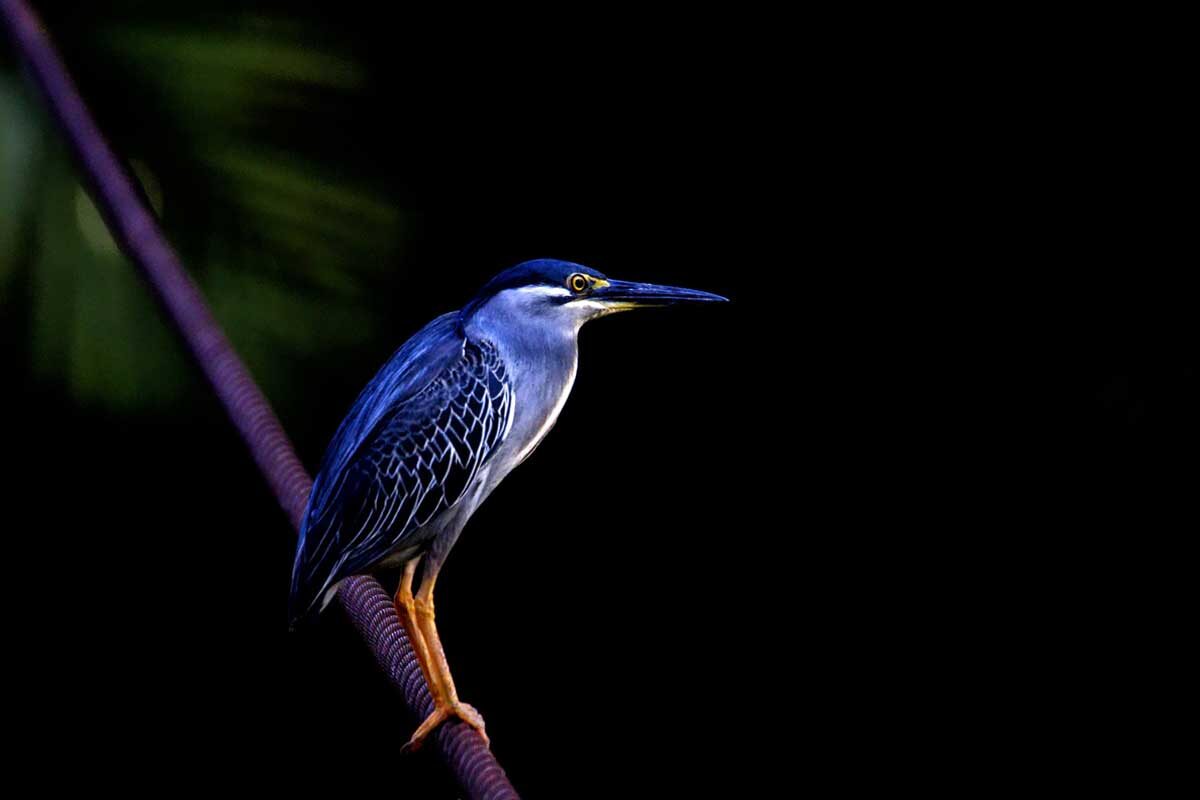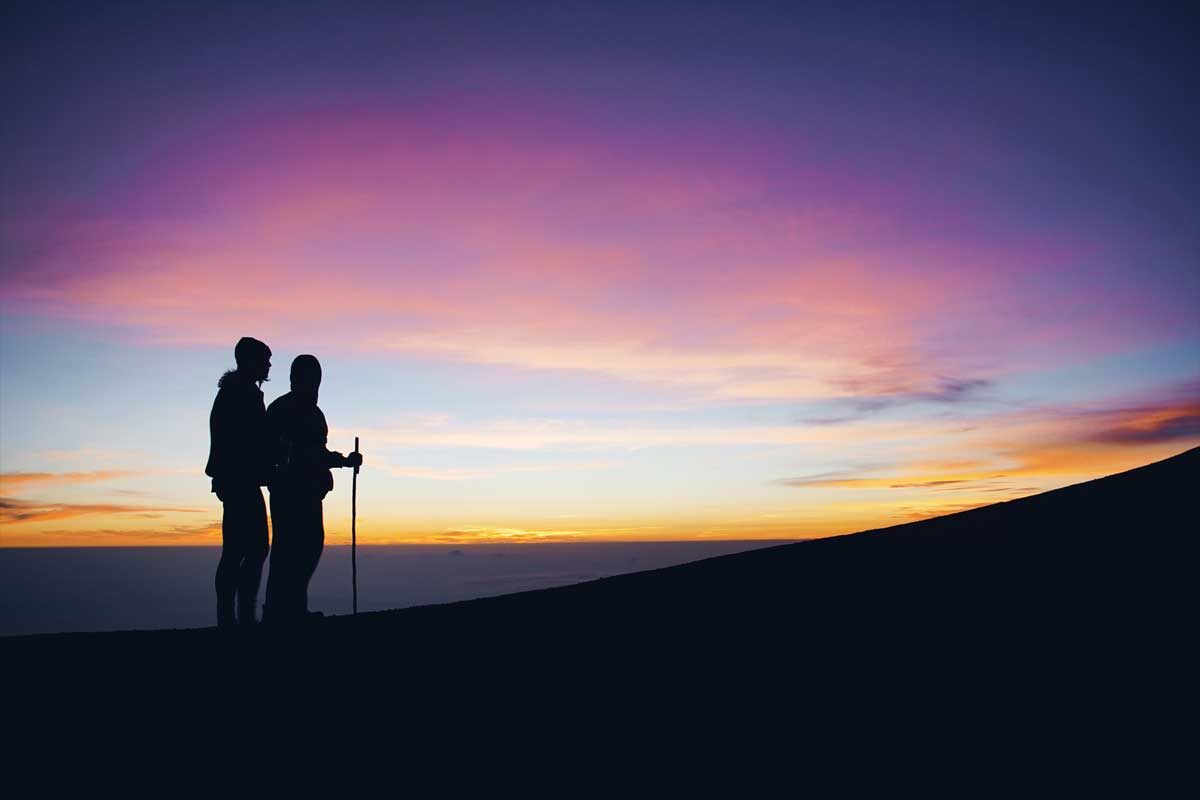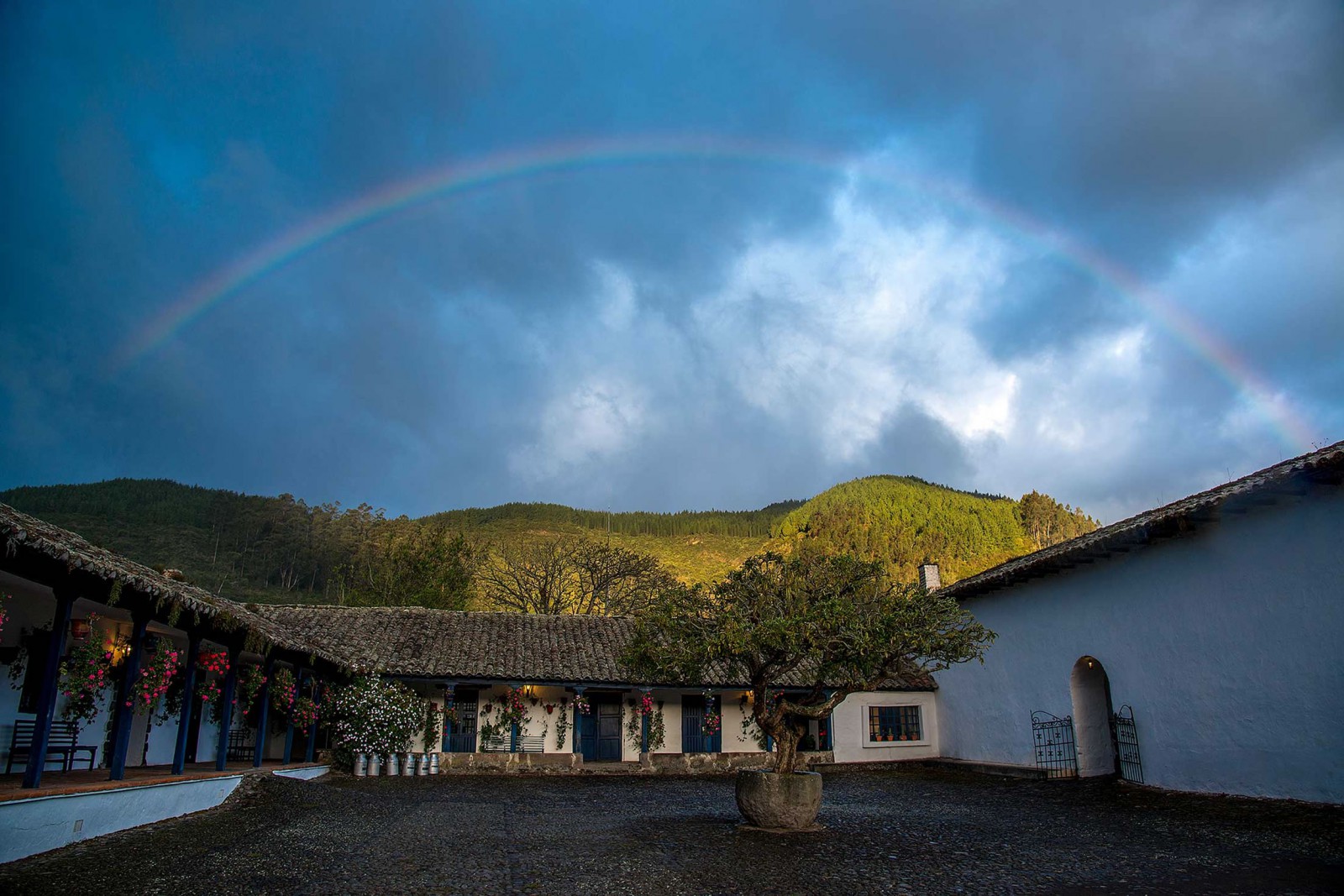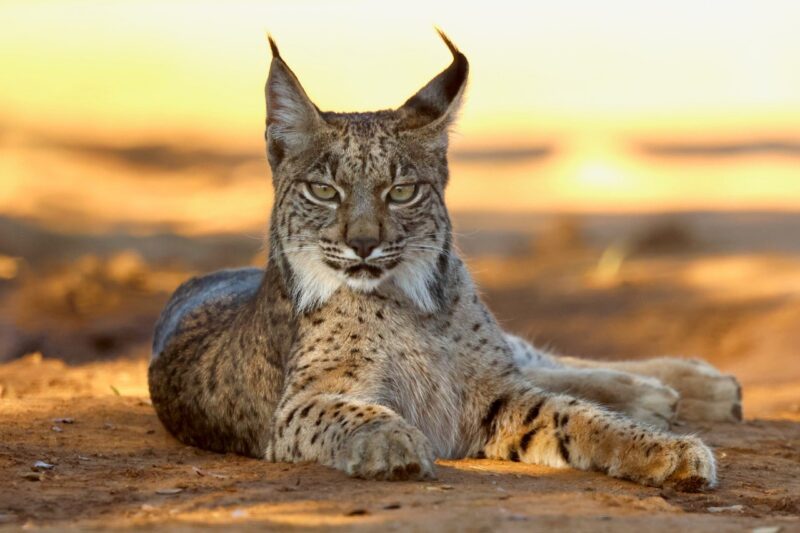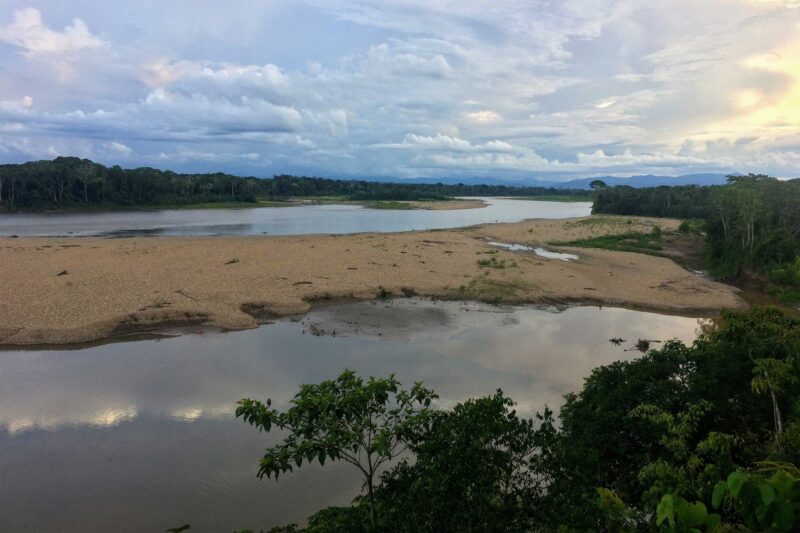Choosing the best time for your hard-earned wildlife holiday can be a minefield, as you try to negotiate the various weather patterns, seasons and animal migrations. For instance, the best time for sunshine isn’t necessarily the best time for wildlife, especially for birds and insects which need lush vegetation to feed and raise their young. Conversely, vegetation which is too thick can make spotting animals a real effort, so the end of the dry season is usually best for that. Below you will find a general guide for what to see when, and you can find more detailed seasonal information within each country section on our website.
January
January means the depths of winter for the northern hemisphere and thus, unsurprisingly, a time when many Europeans and North Americans head south for warmth. It happens to be a dry and sunny month to visit Central America (Belize, Costa Rica and Panama) but it’s also when availability can be an issue. Some South American destinations are also pleasantly warm and sunny making this a great time to visit Chile and Argentina. January comes between the two rainy seasons of Eastern Africa making it a good month to visit Tanzania, Uganda and Rwanda. This is also a good time to visit India, although mornings can be chilly and occasionally foggy. Sri Lanka’s south and west are perfect for a January holiday, with plenty of wildlife to be seen in national parks like Uda Walawe and Yala.
January Wildlife Highlight: Patagonia Puma Tracking (Chile). Cubs born at the start of the southern hemisphere summer are growing fast and adult puma are making the most of the long daylight hours to hunt guanaco, making this is the best time to see cubs in the open plus adult pumas stalking guanacos.
February
Still very cold in the northern hemisphere, February is again a great time for most of Central America (Belize, Costa Rica and Panama) and South America (especially Chile and Argentina). Eastern Africa (Tanzania, Uganda and Rwanda) keeps dry, with the first showers of the long rains starting to arrive at the end of the month. February is also excellent for wildlife holidays to both India and Sri Lanka (mornings can still be chilly in India but it’s pleasantly warm during the day).
February Wildlife Highlight: The Serengeti Wildebeest Migration (Tanzania). Roughly two million wildebeest, zebra and various antelope congregate in a vast mega-herd to calve. No river crossings occur at this time but the multitude of moving mammals fills the view to the horizon. It is also the off-season for tourism, so prices and visitors numbers are both lower than usual.
March
March marks a change of seasons for much of the world. South America (especially Argentina and Chile) remains warm and sunny as does Central America (Belize, Costa Rica and Panama). The long rains arrive in Eastern Africa and the South West Monsoon starts to blow showers to Sri Lanka and the Indian Ocean. Days are starting to get hot in India and this is often considered to be the best month for tiger watching, as the heat is still bearable and big cats spend a lot of time wandering between waterholes. The rains are coming to an end in South East Asia making March a good month to travel to Borneo.
March Wildlife Highlight: Great Whale Snorkelling off Trincomalee (Sri Lanka). From mid-March to mid-April the winds drop in northeast Sri Lanka and large numbers of great whales and dolphins congregate a few miles out at to sea to mate. (This was the location for the BBC’s Blue Planet memorable footage of sperm whales.) A short weather window is created when conditions are perfect for whale and dolphin watching far out to sea. Additionally, a limited number of permits are issued for people to snorkel with blue, sperm and Bryde’s whales: seeing the world largest animals in their underwater habitat is a unique and unforgettable experience. Our director, Alan Godwin, saw all three whale species (as well as pilot whales and dolphins) on three separate outings by boat: his best wildlife encounter ever.
April
The dry season begins in April for much of the world, including Southern Africa (South Africa, Botswana and Namibia) making this a green and very pleasant month to visit. However, the abundant water and lush vegetation can make big mammal sightings more of a challenge. In April, Sri Lanka is usually receiving more monsoon showers and India is becoming very hot and dry. The weather is getting increasingly better in South East Asia and April is usually a dry month on both coasts of Borneo, making this the best month for wildlife holidays which cover both sides of the island. Central America (Belize, Costa Rica and Panama) remains hot and dry but frogs, birds and smaller mammals are becoming harder to find as they shelter from the heat. Autumn arrives in South America bringing cooler weather to Chile and Argentina but signalling the start of the dry season in Brazil and Peru. April is the first month of the dry season for Madagascar and the Seychelles making this a good time to visit these islands.
April Wildlife Highlight: Tiger Photography (India). April is a very hot, dry month in India when natural water is scarce. At this time, tigers are most active at the start and end of the day and spend the rest of the time wallowing in the last few waterholes. This makes them easier to find and creates some superb photo opportunities. Expect early starts and late finishes, plus some exceptional heat during the middle of the day.
May
The change in the seasons is now in full swing. The rains arrive in Costa Rica and Panama but the dry season hangs on for a final (hot) month in Belize. It’s now cold and wet in Chile and Argentina whereas the dry weather returns to Peru and Brazil, although the floodwater levels in the Pantanal remain quite high. Monsoon showers are still affecting Sri Lanka’s southwest, while India stays dry and exceptionally hot for one last month. The dry season extends in South East Asia, making this a good time for wildlife holidays to Borneo, Indonesia and Papua New Guinea. The weather remains dry and sunny in Southern Africa (South Africa, Botswana and Namibia) producing a green and pleasant landscape. Remaining dry also for the Indian Ocean islands of Madagascar and the Seychelles.
May Wildlife Highlight: Waved Albatross (Galapagos Islands – Ecuador). Although the Galapagos Islands can be visited throughout the year, the weather is usually hot and showery from December to April and cool and grey from June to October. May and November tend to get the best of both worlds, being warm and sunny with only the occasional shower. This is also when the cold Humboldt Current usually arrives, bringing nutrient-rich waters and stimulating a surge of marine life. Migratory whales appear and many seabirds start to breed, making this the best time to see waved albatrosses on Española Island. Arrivals start in April and by May the albatross courtship displays should be in full swing with the first eggs being laid.
June
In June the monsoon rain finally arrives in India, with Argentina, Chile and all of Central America now well into their rainy seasons. The long rains come to an end in Eastern Africa making June a good month to visit pretty much all African destinations (South Africa, Botswana, Namibia, Rwanda, Uganda, Tanzania and Rwanda) as well as the Indian Ocean islands of the Seychelles and Madagascar. It is dry also in Peru and Brazil, with the dropping of flood waters in the Pantanal creating ideal conditions in which to spot jaguars. The dry season also continues in most of South East Asia including Borneo, Indonesia and Papua New Guinea.
June Wildlife Highlight: Okavango Delta Flood (Botswana). Classified as semi-arid and running into the Kalahari Desert to the south, the Okavango region would otherwise be dry and desolate if it weren’t for the annual arrival of the Delta floodwaters, originating in the mountains of far off Angola. As the floodwater slowly creeps over the flat plain it stimulates a remarkable transformation of the landscape: bullfrogs emerge from the cracked mud of dried-up ponds, dragonflies fill the air and mammals start arriving in huge numbers – an awesome natural spectacle to witness.
July
July is a great month for wildlife but also one of the most expensive in which to travel due to the start of the northern hemisphere school holidays. Most of Africa (including South Africa, Botswana, Namibia, Rwanda, Uganda, Tanzania and Rwanda) is well into the dry season with vegetation eaten away enough to facilitate some great big game encounters. The Okavango Delta is usually in full flood by this time bringing much needed water and attracting wildlife from miles around. Dry also in Peru and Brazil with wildlife congregating around the rivers of the Pantanal, a reliable time to see jaguars. The Indian Ocean islands of the Seychelles and Madagascar are also dry, so much so that many birds and mammal species of Madagascar can be secretive and hard to find. July is a dry month to visit most of Asia including Borneo, Indonesia, Papua New Guinea and the north and east of Sri Lanka. The rainy season in Central America often takes a quick break towards the end of the month with the saturated forests being full of life (particularly frogs, birds and insects) often making this a surprisingly good time for wildlife holidays to Belize, Costa Rica and Panama.
July Wildlife Highlight: Wild Dog Denning (Botswana). July is a fabulous month for Botswana, with pleasantly warm and sunny days and the flooded Okavango Delta and other waterways attracting wildlife in huge numbers. No surprise then, that this is the time that wild dogs choose to have their pups. Usually very far ranging and rarely staying in the same place for long, denning time is when wild dogs stop being nomads and sightings become much more predictable. The sight of the young puppies emerging and blinking in the bright sunlight is especially heart warming.
August
August is another busy month because of our school holidays and the fact that so many wildlife destinations have perfect weather at this time. You can expect good seasonal conditions and fantastic wildlife sightings at all of the following: most of Africa (including South Africa, Botswana, Namibia, Rwanda, Uganda, Tanzania and Rwanda); large parts of Guyana, Peru and Brazil; South East Asia (Borneo, Indonesia, Papua New Guinea); northeast Sri Lanka and the Indian Ocean islands of Madagascar and the Seychelles. Much of Central America (e.g. Belize, Costa Rica and Panama) can start August dry, with the rains returning towards the end of the month.
August Wildlife Highlight: The great elephant gathering, Minneriya National Park (Sri Lanka). During August, the northeast of Sri Lanka is usually undergoing a long dry spell. The drying of the ancient reservoir (or tank) in Minneriya National Park leaves behind rich grazing around the shore and a still reliable supply of fresh water, drawing large numbers of pachyderms from the surrounding countryside to feed, bathe and drink, creating the greatest annual congregation of Asian elephants in the world.
September
September is often the best month for wildlife holidays to a number of our destinations. The long dry season continues throughout much of Africa (South Africa, Botswana, Namibia, Rwanda, Uganda, Tanzania and Rwanda); South America (Guyana, Peru and Brazil); Asia (including Borneo, Indonesia, Papua New Guinea and Sri Lanka) plus the Indian Ocean islands of Madagascar and the Seychelles. However, the end of the school holidays means that visitor numbers are reduced and prices are often lower. By now, many of these countries are very dry and the wildlife is congregating around the last few remaining waterholes, so creating a lot of concentrated sightings.
September Wildlife Highlight: Jaguar Watching in the Pantanal (Brazil). Water levels in the Pantanal wetlands are generally very low this month causing jaguars to spend a lot of time prowling the river banks looking for caiman, capybara and other prey. The weather is typically warm and sunny in September with less chance of the cold fronts that can occasionally put a dampener on the experience earlier in the season. In 2002, Reef & Rainforest were the first travel company in the world to offer jaguar watching tours to the Pantanal.
October
October marks a change of seasons around the world. It’s roughly the last month of the dry season for much of Africa (including South Africa, Botswana, Namibia, Rwanda, Uganda, Tanzania and Rwanda); South America (Guyana, Peru and Brazil); plus the Indian Ocean islands of Madagascar and the Seychelles. Sightings can be excellent at this time of year as animals search out the last remaining water sources. October can be a particularly dry and dusty month with temperatures starting to rise in Southern Africa. The North East Monsoon begins in northeast Sri Lanka and brings the occasional shower to Indonesia, Borneo and Papua New Guinea. Conversely, the rains are coming to an end in other parts of the world. The monsoon is winding down in India, making travel possible towards the end of the month and spring is starting in South America, creating a very pleasant time for a visit to Argentina and Chile.
October Wildlife Highlight: Baby Lemurs (Madagascar). During October, the weather begins to warm up and showers arrive, stimulating a rapid regrowth of vegetation lost during the dry season. This new greenery creates an explosion of animal activity with many bird species displaying, nesting and growing their breeding plumage. October is the main month when baby lemurs are born and can be seen clinging to their mothers as they leap between the forest trees.
November
The shift in the seasons continues. The first rain showers arrive in Africa and the wildlife begins to disperse in search of fresh grazing. Water levels in Brazil are still low but increasing rain start to affect travel and sightings. Showers are also on the increase in the Seychelles, Madagascar, Sri Lanka, Indonesia, Borneo and Papua New Guinea. The dry season continues for Argentina and Chile, making this one of the best months to travel to southern South America. India is now warm, sunny and spring-like, although the new vegetation growth over the monsoon months can make clear sightings more of a challenge.
November Wildlife Highlight: Manta Rays (Indonesia). Unsurprisingly for such a vast island nation, Indonesia has a wide range of different climates and weather patterns. In particular, the Raja Ampat archipelago (found off the eastern side of the island of New Guinea) have pretty much the opposite weather pattern to the rest of Indonesia. By travelling in November, you are between the seasons in all areas. Not particularly dry but also not especially wet, making this the best time to combine Raja Ampat with other islands in Indonesia like Bali and Komodo. Better still, November is the start of the manta ray season in both Komodo and Raja Ampat providing excellent opportunities for diving and snorkelling with these majestic giants.
December
Weather patterns are more established this month, being wet in most of Africa (with the exception of Uganda), South East Asia and the Indian Ocean. The good weather continues in Argentina and Chile and the dry season now begins in Central American making this a good time to visit Costa Rica, Belize and Panama. The weather continues to cool in India: fauna sightings tend to get better as the monsoon growth starts to get eaten back but the end of the month can be chilly, with fog in the north of the country. This is a good month to visit Sri Lanka, especially the south which is starting its season of calm and dry weather.
December Wildlife Highlight: Anacondas in Los Llanos (Colombia). The wildlife-filled wetlands of Los Llanos (the plains) are flooded for much of the year but start drying out from November onwards. By December, the wetlands become a series of shallow pools, providing the perfect environment for giant anacondas which hunt in the shallows and can often be spotted basking in the warm sunshine.
PLEASE NOTE: The above is simply a rough guide to what can be expected weather-wise in our destinations but the world’s weather has become increasingly unpredictable due to climate change. See our full range of Wildlife Tours.

